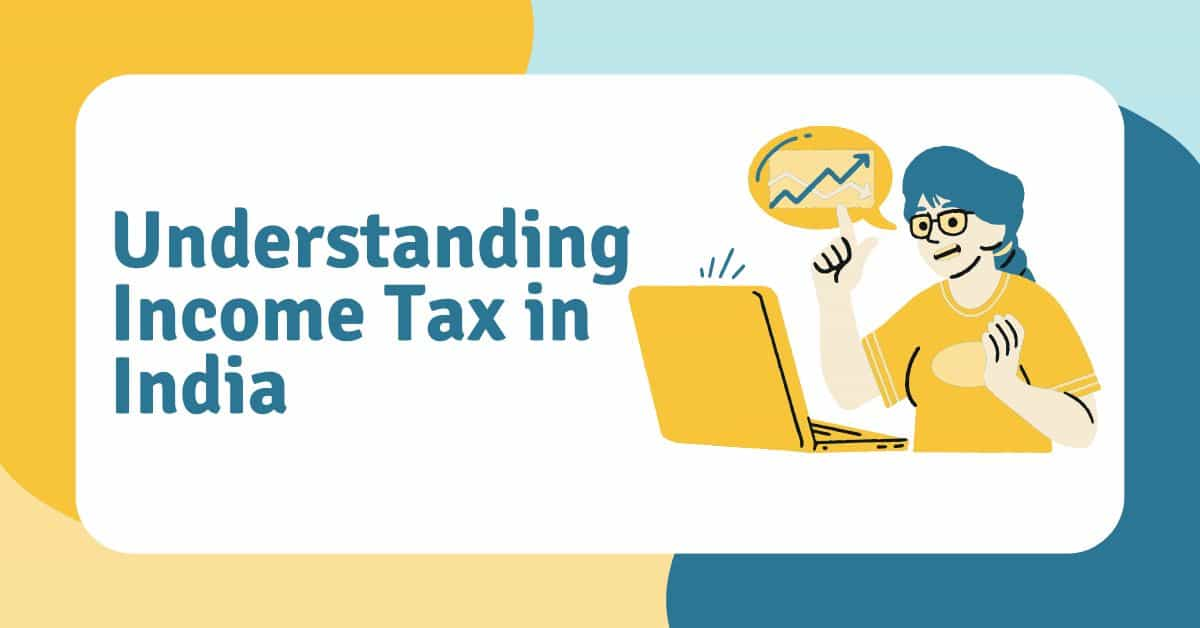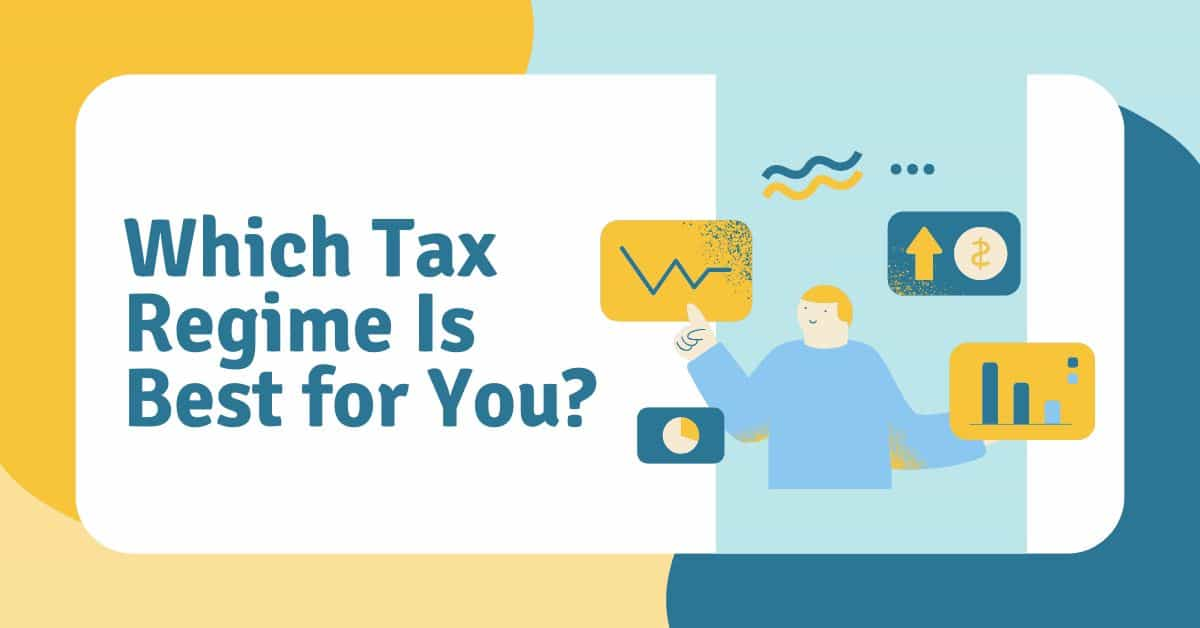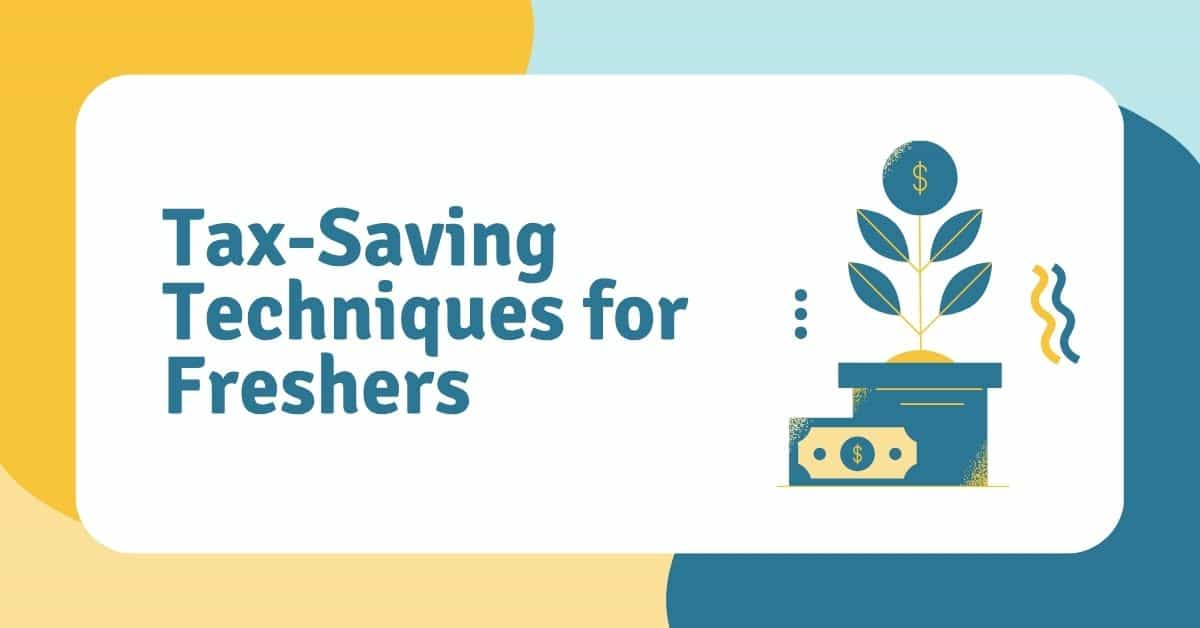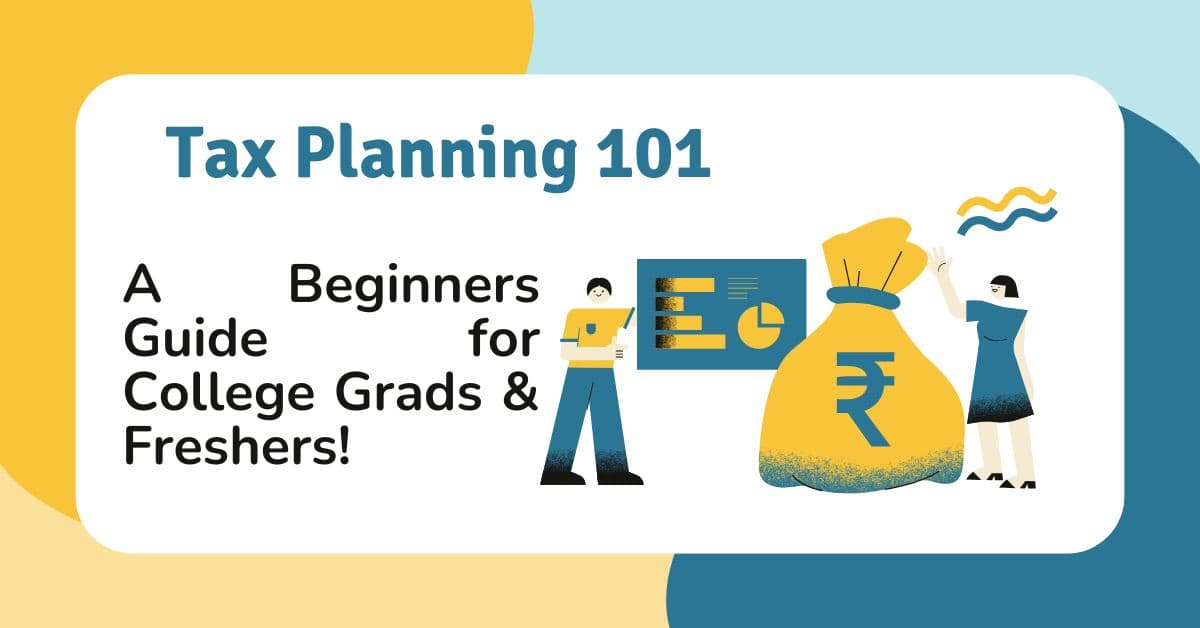Tax Planning 101: Congratulations on getting your first job. Tax preparation is a crucial component of financial management, which becomes increasingly important when you enter the workforce. Knowing how to handle income tax can help Indian college graduates and recent graduates save money, feel less stressed, and position themselves for financial success. Now is the ideal moment to master the fundamentals because the Union Budget 2025 is bringing about a number of significant changes for FY 2025-26 (AY 2026-27), including 0% tax on incomes up to ₹12.75 lakh under the new tax regime. This detailed guidance, which covers the two tax regimes, useful tax-saving techniques, and detailed directions for completing your first Income Tax Return (ITR), makes tax planning easier for beginners. These suggestions can help you save more of your hard-earned money, regardless of your annual income of ₹5 lakh or ₹12 lakh.
Why Tax Planning Matters
Using the deductions, exemptions, and refunds offered by the Income Tax Act of 1961, tax planning entails setting up your finances to legally reduce your tax bill. Tax planning is crucial for new hires because:
- Saves Money: Lowering your tax obligation frees up money for investments, savings, or personal objectives.
- Prevents Penalties: Accurate and timely tax filing helps avoid penalties (up to ₹10,000 for late filing) and interest on overdue taxes.
- Develops Financial Discipline: The groundwork for long-term financial security is laid by early tax planning practices.
- Optimises Returns: Knowing tax regimes enables you to select the option that, given your income and expenses, will save you the most money.
According to [Bajaj Finserv], the new tax regime’s improved refund under Section 87A permits 0% tax for incomes up to ₹12.75 lakh in FY 2025–2026. This makes it especially alluring for freshers with modest wages and little deductions. You can make smart decisions and manage these changes with the aid of this guide.
Understanding Income Tax in India
Your earnings throughout a financial year (FY), which runs from April 1 to March 31, are subject to income tax in India. The following assessment year (AY) is when you file your taxes. You must file your ITR for FY 2025–2026 by July 31, 2026, for AY 2026–2027. Your salary, interest from savings accounts, fixed deposits, and other sources, such as freelancing, are all included in your income. Salaries are usually the main source of income for new hires; your employer’s Form 16 details your salary components and Tax Deducted at Source (TDS).

Higher incomes are subject to higher tax rates under India’s progressive tax system. You have a choice between two tax regimes: the new regime, which has fewer deductions and lower rates, and the old regime, which has higher rates but more deductions. Effective tax planning requires an understanding of various regimes.
The Two Tax Regimes
There are two tax systems available from the Indian government, each with different perks and tax slabs. This is a summary for FY 2025–2026 (AY 2026–2027):
New Tax Regime (Default)
The new regime, which was implemented to streamline taxes, is the default choice for taxpayers. Although it provides reduced tax rates, it restricts employer payments to the National Pension System (NPS) under Section 80CCD(2) and the standard deduction for salaried individuals to ₹75,000 [ClearTax]. These are the tax slabs:
| Income Range (₹) | Tax Rate |
| Up to 4,00,000 | 0% |
| 4,00,001-8,00,000 | 5% |
| 8,00,001-12,00,000 | 10% |
| 12,00,001-16,00,000 | 15% |
| 16,00,001-20,00,000 | 20% |
| 20,00,001-24,00,000 | 25% |
| Above 24,00,000 | 30% |
Under Section 87A, you can seek a refund of up to ₹60,000, which will lower your tax to zero, if your taxable income is up to ₹12,000,000. Incomes up to ₹12,75,000 are almost tax-free thanks to the ₹75,000 standard deduction [Tax2win].
Old Tax Regime
The previous administration had higher tax rates but permitted more exemptions and deductions. The slabs for people under 60 are as follows:
| Income Range (₹) | Tax Rate |
| Up to 2,50,000 | 0% |
| 2,50,001-5,00,000 | 5% |
| 5,00,001-10,00,000 | 20% |
| Above 10,00,000 | 30% |
Section 87A refund: You can claim a ₹12,500 refund if your taxable income is up to ₹5,00,000, which will lower your tax to zero [Bajaj Finserv]. Among the deductions are:
- Section 80C: Up to ₹1.5 lakh for investments such as life insurance premiums, Equity-Linked Savings Schemes (ELSS), and Public Provident Funds (PPF).
- Section 80D: Health insurance premiums up to ₹25,000.
- HRA: Salary and city (metro/non-metro)-based exemption for rent paid.
- Standard Deduction: For salaried individuals, the standard deduction is ₹50,000.
In both regimes, the tax amount is subject to a 4% Health and Education Cess, and high-income earners (those earning more than ₹50 lakh) may be subject to a 10–25% surcharge [ClearTax].
Which Tax Regime Is Best for You?
Depending on your income, spending, and capacity to claim deductions, you can choose between the old and new regimes. Because of its simplicity and larger rebate maximum, the new regime is usually more advantageous for new hires, who frequently have fewer investments or deductions. Let’s use several samples to compare:

Example 1: ₹6,00,000 in annual salary
The new regime
- Salary Gross: ₹6,00,000
- Standard Deduction: 75,000
- Income subject to taxes: ₹5,25,000
- Tax: 5% of ₹1,25,000 = ₹6,250 (₹5,25,000 – ₹4,00,000)
- Section 87A rebate: Tax is zero since taxable income is less than ₹12,000,000.
Old Regime (No deductions):
Total Pay: ₹6,00,000
Typical deduction: 50,000
Amount Due: ₹5,50,000
The tax:
- Up to ₹2,50,000: 0
- As a percentage of ₹2,50,000, ₹2,50,001–₹5,00,000 = ₹12,500
- ₹5,00,001-10% of ₹50,000 = ₹10,000
- Total tax: ₹23,400 (₹22,500 + 4% cess).
Old Regime (With Subtractions):
- Deductions: ₹2,00,000 (₹150,000 from Section 80C plus ₹50,000 from the normal deduction).
- Taxable Income: ₹6,00,000 minus ₹2,00,000 equals ₹4,00,000.
- Tax: 5% of ₹1,50,000 = 5% of ₹4,00,000 – ₹2,50,000 = ₹7,500
- Section 87A rebate: Since income is less than ₹5,00,000, there is no tax.
Conclusion: The former regime required investments of ₹1.5 lakh to attain the same outcome, but the new rule gives 0% tax without requiring investments.
Example 2: ₹10,000,000 in annual salary
The new regime:
Salary Gross: ₹10,000,000
Normal Deduction: 75,000
Income subject to taxes: ₹9,25,000
Tax:
- Up to ₹4,00,000: 0
- 5% of ₹4,00,000 = ₹20,000 is equal to ₹4,00,001–₹8,00,000.
- 10% of ₹1,25,000 = ₹12,500 is ₹8,00,001–₹9,25,000.
- Tax total: ₹32,500
Section 87A rebate: Tax is nil since income is less than ₹12,000,000 and tax is less than ₹60,000.
Old Regime (With Subtractions):
₹1,50,000 (80C) + ₹50,000 (normal deduction) + ₹1,00,000 (HRA, if qualified) = ₹3,00,000 in deductions
₹10,000,000 minus ₹3,00,000 equals ₹7,00,000 in taxable income.
Tax:
- 0 up to ₹2,50,000
- Since 5% of ₹2,50,000 is ₹12,500, ₹2,50,001–₹5,00,000
- 20% of ₹2,00,000 = ₹40,000 is equal to ₹5,00,001–₹7,00,000
- ₹54,600 is the total tax (₹52,500 + 4% cess).
Conclusion: While the old regime required large deductions to lower tax burden, which could not be possible for freshmen without investments or rent expenses, the new regime gives 0% tax.
Because of its simplicity and zero-tax benefit, the new regime is frequently the superior option for incomes up to ₹12,75,000. Use tools like [ClearTax’s Tax Calculator] to compute both regimes if you have significant deductions (such as high rent or house loan interest).
Tax-Saving Techniques for Freshers
Here are five practical tax-saving strategies for recent college graduates and freshers:

1. Select the Right Tax Regime
To compare your tax due under the two regimes, use online tax calculators. With minimal deductions, the new regime is probably more advantageous for incomes under ₹12,75,000. The old regime might save more if you intend to pay a large amount of rent or invest in tax-saving options [Tax2win].
2. Recognise Your Pay Scale
Basic pay, House Rent Allowance (HRA), and special allowances are among the items on your pay stub. With the exception of certain exclusions, such as the transit allowance for those with disabilities, the majority of allowances are taxable under the new regime. Under the previous administration, if you paid rent, which was determined by taking the least of:
- Actual HRA received
- 10% of the base pay less the amount of rent paid.
- 40% (in non-metropolitan areas) or 50% (in metro areas) of the base pay.
As an example, you can claim a ₹1,60,000 HRA exemption, which lowers taxable income, if you have a ₹3,20,000 basic salary and ₹2,00,000 HRA and spend ₹2,40,000 in rent each year in a metro area ([ClearTax]([invalid site, do not cite])). For further information, see your pay slip and speak with HR.
3. Maintain Correct Documentation
Keep records such as:
- Form 16: Your employer will provide you with Form 16, which details your salary and TDS.
- Rent receipts: For HRA claims during the previous administration.
- Proof of Investment: For Section 80C/80D deductions (such as health insurance, PPF, and ELSS).
- Bank statements: To show interest received from fixed deposits or savings accounts.
These bolster claims during inspection [Income Tax Department] and guarantee accurate ITR filing.
4. File taxes on time
For salaried individuals, the ITR must be filed by July 31 of the assessment year (July 31, 2026, for FY 2025-26). In addition to interest on overdue taxes at 1% monthly under Section 234A, late filing carries a penalty of up to ₹10,000 under Section 234F [ClearTax]. To prevent last-minute mistakes, file early.
5. Examine Old Regime Tax-Saving Investments
Consider these well-liked Section 80C investments (up to ₹1.5 lakh) if you choose the previous system:
- Public Provident Fund (PPF): 7.1% tax-free returns and a 15-year lock-in are offered by the Public Provident Fund (PPF) [Policybazaar].
- Equity-linked savings schemes (ELSS): Mutual funds with a three-year lock-in period that have a potential return of 12–15% are known as equity-linked savings schemes (ELSS) [Groww].
- Life insurance premiums: Premiums paid for endowment or term insurance policies are known as life insurance premiums.
- National Savings Certificate (NSC): 5-year lock-in, 7.7% interest rate.
A ₹1,50,000 investment in ELSS, for instance, lowers your taxable income and may result in a ₹31,200 tax savings (30% slab) while increasing your wealth [Tax2win].
- Choose the Correct Tax Regime: Your tax liability can be greatly reduced by choosing the right tax regime. For instance, under the new system, anyone making up to ₹10 lakh can use regular deductions and rebates to pay no taxes.
- Recognise Your Pay Structure: Determine the tax-exempt allowances by breaking down the components of your salary. The House Rent Allowance (HRA) is a typical example. If you are in the 20% tax rate, you can save ₹32,000 if you claim ₹1.6 lakh as HRA exemption.
- Keep Records and Documents Ready: To ensure proper tax filing and the claim of exemptions such as HRA or 80C deductions, it is crucial to keep Form 16, rent receipts, and investment documents on hand.
- File Your Income Tax Return on Time: You can avoid late costs of up to ₹10,000 and additional interest under Sections 234A/B by filing your income tax return before the deadline, which is July 31, 2026.
- Invest in Tax-Saving Instruments: During the previous administration, if you were in the 30% tax bracket, you could save up to ₹31,200 by putting ₹1.5 lakh into tax-saving choices like PPF or ELSS mutual funds.
How To File Your First ITR
File ITR Online for Beginners – A Quick Guide
If you follow these instructions, filing your ITR is simple:
- Register using your PAN on the E-Filing Portal: By going to [incometax.gov.in]. Connect your Aadhaar to confirm.
- Obtain Documents: Compile Form 16, bank statements, proof of investment, and, if relevant, rent receipts.
- Select the Correct ITR Form: ITR-1 (Sahaj) is usually used for salaried freshmen with simple income. If you have capital gains or more than one source of income, you must file ITR-2 [Income Tax Department].
- Enter the following information: Enter your income, deductions, and TDS information from Form 16 after logging in and choosing the ITR form. To confirm the sources of income, consult the Annual Information Statement (AIS).
- Verify Your Return: Use a digital signature certificate (DSC), net banking, or an Aadhaar OTP to confirm within 30 days. Unconfirmed returns are not accepted.
- Make Use of Internet Resources: Platforms that provide guided filing and auto-fetch data from Form 16 and AIS include [ClearTax] and [Tax2win].
Common Mistakes to avoid
- Not Reporting All Income: Even if interest from fixed deposits or savings accounts is minimal, it should be included (for example, ₹10,000 in interest increases taxable income).
- Inaccurate Deductions: To avoid scrutiny under the previous regime, only claim eligible deductions with legitimate proof.
- Missing the Deadline: Your finances will be impacted by penalties and interest for late filing.
- Not Verifying: According to [ClearTax], an unverified ITR is deemed invalid, postponing refunds or compliance.
- Selecting the Wrong Regime: To prevent missing deductions or overpaying taxes, compute both regimes.
Frequently Asked Questions (FAQs)
1. Why is it crucial for freshers to arrange their taxes?
With 0% tax up to ₹12.75 lakh under the new regime, it saves money, prevents penalties, and fosters financial discipline [Bajaj Finserv].
2. Which tax system is more advantageous for freshers?
With few deductions, the new system is easier to use and frequently better for incomes up to ₹12.75 lakh. To verify [Tax2win], compute both.
3. What documentation is required to submit my ITR?
Proof of investment, bank statements, and Form 16 are necessary [Income Tax Department].
4. When is the FY 2025–2026 ITR filing deadline?
For salaried individuals, the deadline is July 31, 2026; in certain situations, it is extended until September 15, 2026 [ClearTax].
5. Can I switch my tax regime annually?
Yes, while submitting your ITR, you have the option to select each year for non-business income [Income Tax Department].
An Example from Real Life
The situation is that Priya, a 23-year-old fresher to Bengaluru who makes ₹8,00,000 a year, lives with her parents and has no investments or rent costs.
- Action: By tracking her spending with [Money View], Priya is able to reduce her monthly eating expenses and save ₹1,000. She opts for the new tax regime, which lowers her taxable income to ₹7,25,000 with a ₹75,000 standard deduction. The Section 87A rebate reduces her tax, which was ₹16,250, to zero. By July 31, 2026, she uses Form 16 to file her ITR-1 on [incometax.gov.in] and confirms it using an Aadhaar OTP.
- Result: Compared to the previous system with no deductions, Priya saves ₹54,600 by paying zero tax without investments. In order to prepare for future taxes, she begins a ₹1,000 monthly SIP in ELSS.
Conclusion
For recent college graduates and beginners, tax preparation is an effective strategy to increase income and create financial stability. The new tax regime is perfect for people who are just starting their professions with little deductions because it offers a zero-tax benefit up to ₹12.75 lakh. You can handle taxes with simplicity if you know your pay, select the appropriate regime, file on time, and maintain proper records. Use programs like [ClearTax] or [Tax2win] to get started right now, and get individualised advice from a financial expert. Take charge of your money and create the conditions for future success!
Disclaimer: Tax rules and results are subject to change and depend on specific circumstances. Before making any financial decisions, speak with a knowledgeable tax advisor. This article is only meant to be instructive.
Shanti Gold IPO is Live – Here’s How to Make it a Tax Saving Opportunity!
Infosys Share Price Today: Capital Gains Tax Explained Simply

